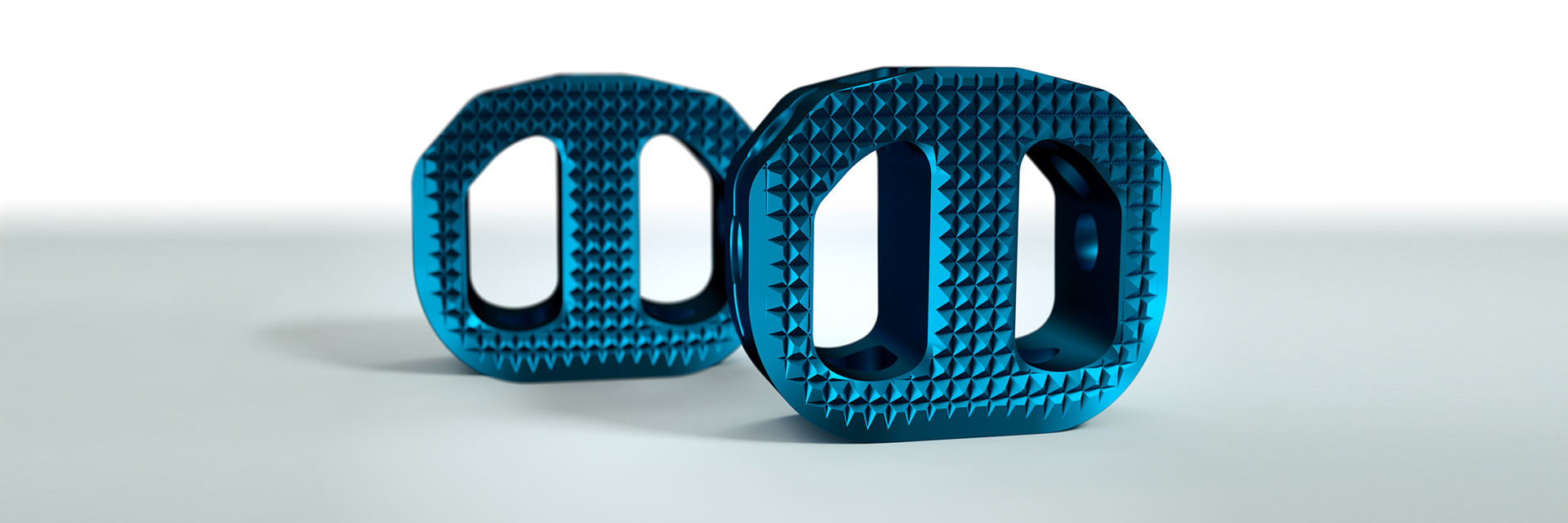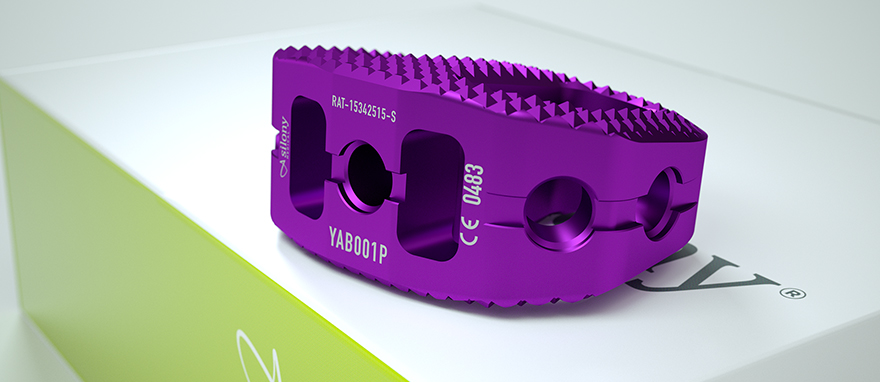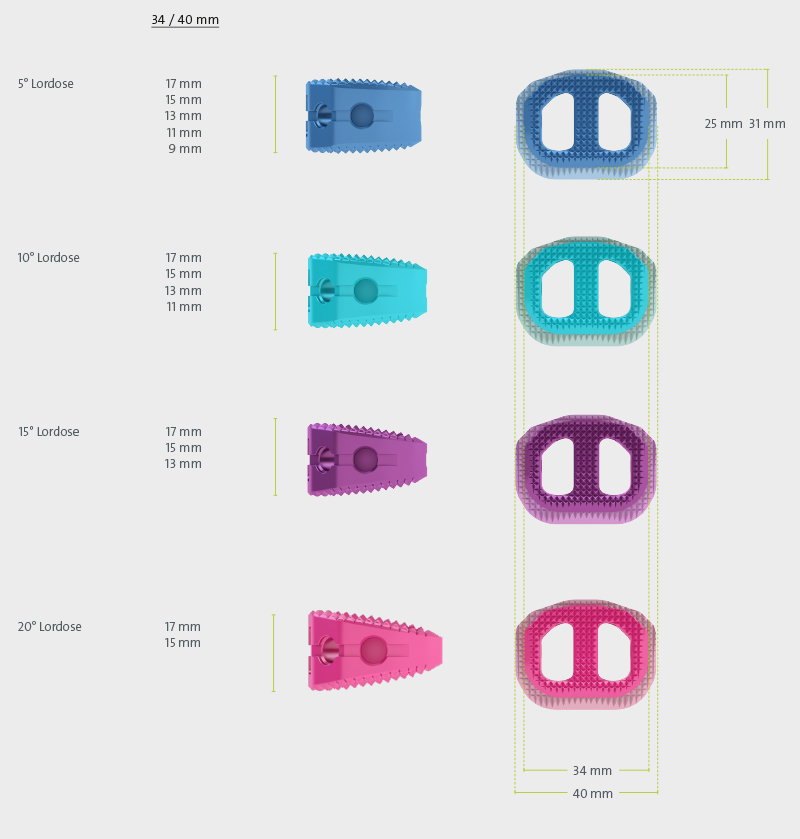The ROCCIA ALIF (Anterior Lumbar Interbody Fusion) was specifically developed for the challenges posed by anterior treatment of the lumbar spine. Here, the focus was particularly on the restoration of sagittal balance, taking into account the primary stability and restoration of physiological lordosis. The cage was designed for anterior and anterolateral approaches.

CRACK THE CODE:
The ROCCIA ALIF enables easy allocation of the different cage sizes and trials thanks to the color coding. This is extended via the preparation instruments up to the sterile-packaged implants in order to facilitate efficient treatment of a wide range of anatomical situations.

PREPARING THE FUSION.
Symmetrical pyramid-shaped teeth on the surface of the titanium implant ensure good primary anchorage of the cage on the base plates and cover plates, while the cage, when implanted correctly, is largely prevented from sinking in by virtue of its broad supporting surface. The generously proportioned chamber system in the cage enables improved interbody fusion, providing plenty of room for autologous or homologous bone material and/or bone substitute material for later fusion.
THE MODULE FOR RECONSTRUCTION.
To optimize treatment with respect to the patient's anatomy and pathology, a wide range of ROCCIA ALIF sizes is available (Fig. 10). The portfolio comprises five anterior heights (from 9 to 17 mm, in 2-mm increments) and two widths (34 and 40 mm). In addition to the regular lordotic angles of 5° and 10°, hyperlordotic cages with an angle of 15° and 20° are also available.
The inserter with its respective color code corresponds to the associated cage.

